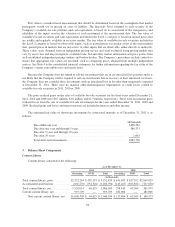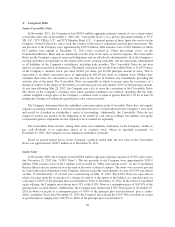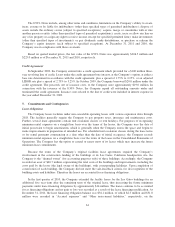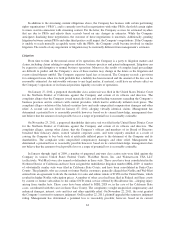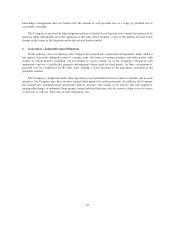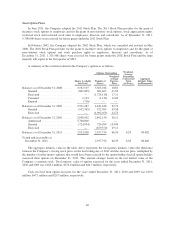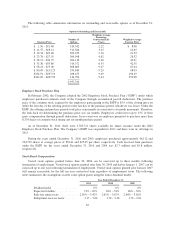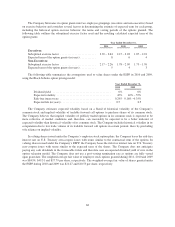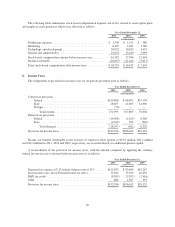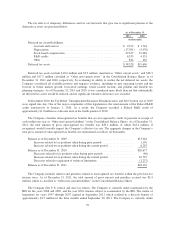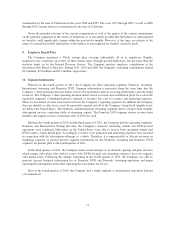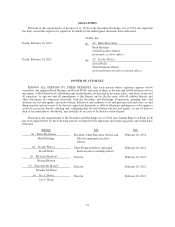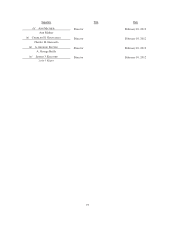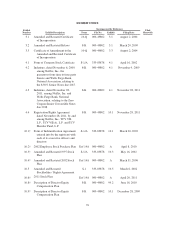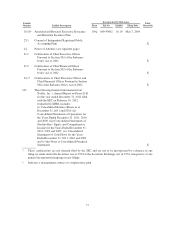NetFlix 2011 Annual Report Download - page 70
Download and view the complete annual report
Please find page 70 of the 2011 NetFlix annual report below. You can navigate through the pages in the report by either clicking on the pages listed below, or by using the keyword search tool below to find specific information within the annual report.
The Company bifurcates its option grants into two employee groupings (executive and non-executive) based
on exercise behavior and considers several factors in determining the estimate of expected term for each group,
including the historical option exercise behavior, the terms and vesting periods of the options granted. The
following table outlines the suboptimal exercise factor used and the resulting calculated expected term of the
option grants:
Year Ended December 31,
2011 2010 2009
Executives:
Suboptimal exercise factor ......................... 3.39 – 3.64 2.15 – 3.28 1.87 – 2.01
Expected term of the option grants (in years) ...........864
Non-Executives:
Suboptimal exercise factor ......................... 2.17 – 2.26 1.78 – 2.09 1.73 – 1.76
Expected term of the option grants (in years) ...........543
The following table summarizes the assumptions used to value shares under the ESPP in 2010 and 2009,
using the Black-Scholes option pricing model:
Year Ended December 31,
2010 2009
Dividend yield ......................................... 0% 0%
Expected volatility ...................................... 45% 42%–55%
Risk-free interest rate .................................... 0.24% 0.16% –0.35%
Expected life (in years) ................................... 0.5 0.5
The Company estimates expected volatility based on a blend of historical volatility of the Company’s
common stock and implied volatility of tradable forward call options to purchase shares of its common stock.
The Company believes that implied volatility of publicly traded options in its common stock is expected to be
more reflective of market conditions and, therefore, can reasonably be expected to be a better indicator of
expected volatility than historical volatility of its common stock. The Company includes historical volatility in its
computation due to low trade volume of its tradable forward call options in certain periods, there by precluding
sole reliance on implied volatility.
In valuing shares issued under the Company’s employee stock option plans, the Company bases the risk-free
interest rate on U.S. Treasury zero-coupon issues with terms similar to the contractual term of the options. In
valuing shares issued under the Company’s ESPP, the Company bases the risk-free interest rate on U.S. Treasury
zero-coupon issues with terms similar to the expected term of the shares. The Company does not anticipate
paying any cash dividends in the foreseeable future and therefore uses an expected dividend yield of zero in the
option valuation model. The Company does not use a post-vesting termination rate as options are fully vested
upon grant date. The weighted-average fair value of employee stock options granted during 2011, 2010 and 2009
was $84.94, $49.31 and $17.79 per share, respectively. The weighted-average fair value of shares granted under
the ESPP during 2010 and 2009 was $21.27 and $10.53 per share, respectively.
68


